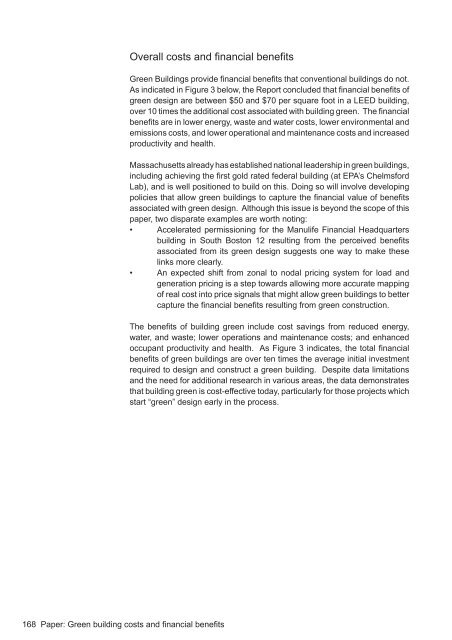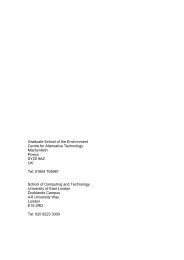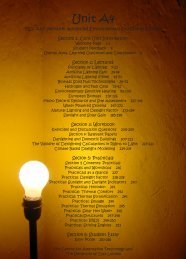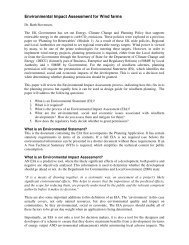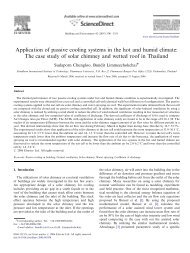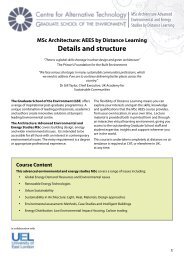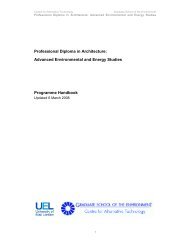Module B1 Study Book - the Graduate School of the Environment
Module B1 Study Book - the Graduate School of the Environment
Module B1 Study Book - the Graduate School of the Environment
Create successful ePaper yourself
Turn your PDF publications into a flip-book with our unique Google optimized e-Paper software.
Overall costs and financial benefits<br />
Green Buildings provide financial benefits that conventional buildings do not.<br />
As indicated in Figure 3 below, <strong>the</strong> Report concluded that financial benefits <strong>of</strong><br />
green design are between $50 and $70 per square foot in a LEED building,<br />
over 10 times <strong>the</strong> additional cost associated with building green. The financial<br />
benefits are in lower energy, waste and water costs, lower environmental and<br />
emissions costs, and lower operational and maintenance costs and increased<br />
productivity and health.<br />
Massachusetts already has established national leadership in green buildings,<br />
including achieving <strong>the</strong> first gold rated federal building (at EPA’s Chelmsford<br />
Lab), and is well positioned to build on this. Doing so will involve developing<br />
policies that allow green buildings to capture <strong>the</strong> financial value <strong>of</strong> benefits<br />
associated with green design. Although this issue is beyond <strong>the</strong> scope <strong>of</strong> this<br />
paper, two disparate examples are worth noting:<br />
• Accelerated permissioning for <strong>the</strong> Manulife Financial Headquarters<br />
building in South Boston 12 resulting from <strong>the</strong> perceived benefits<br />
associated from its green design suggests one way to make <strong>the</strong>se<br />
links more clearly.<br />
• An expected shift from zonal to nodal pricing system for load and<br />
generation pricing is a step towards allowing more accurate mapping<br />
<strong>of</strong> real cost into price signals that might allow green buildings to better<br />
capture <strong>the</strong> financial benefits resulting from green construction.<br />
The benefits <strong>of</strong> building green include cost savings from reduced energy,<br />
water, and waste; lower operations and maintenance costs; and enhanced<br />
occupant productivity and health. As Figure 3 indicates, <strong>the</strong> total financial<br />
benefits <strong>of</strong> green buildings are over ten times <strong>the</strong> average initial investment<br />
required to design and construct a green building. Despite data limitations<br />
and <strong>the</strong> need for additional research in various areas, <strong>the</strong> data demonstrates<br />
that building green is cost-effective today, particularly for those projects which<br />
start “green” design early in <strong>the</strong> process.<br />
168 Paper: Green building costs and financial benefits


